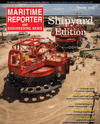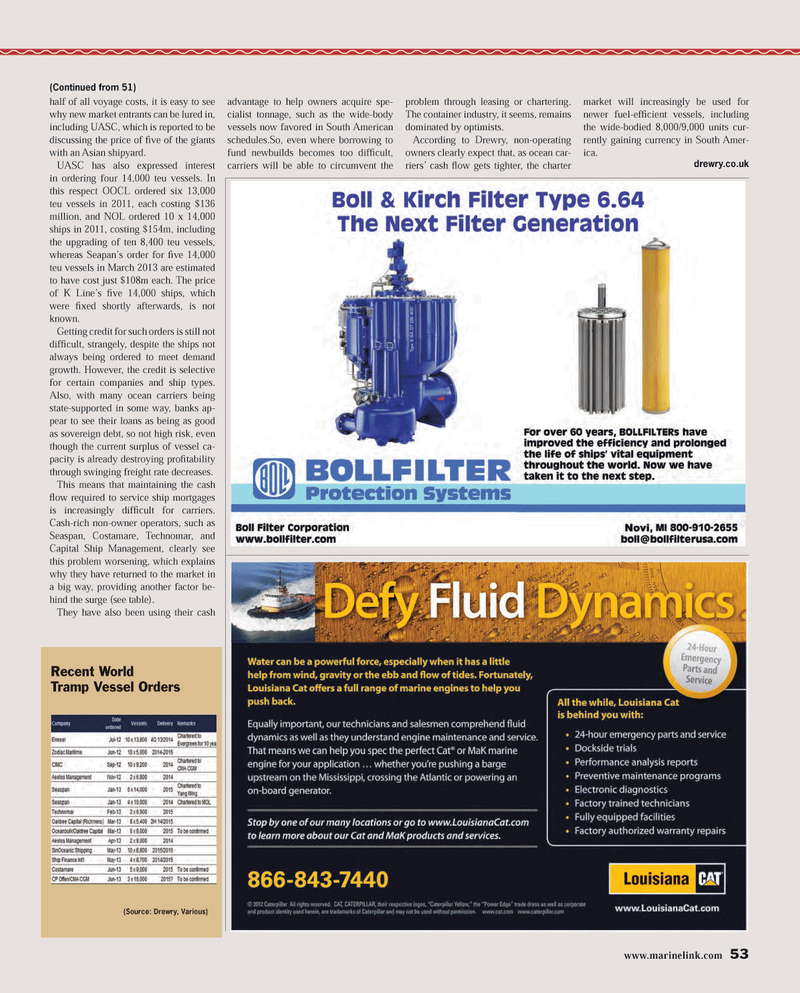
Page 53: of Maritime Reporter Magazine (August 2013)
Shipyard Edition
Read this page in Pdf, Flash or Html5 edition of August 2013 Maritime Reporter Magazine
half of all voyage costs, it is easy to see why new market entrants can be lured in, including UASC, which is reported to be discussing the price of Þ ve of the giants with an Asian shipyard. UASC has also expressed interest in ordering four 14,000 teu vessels. In this respect OOCL ordered six 13,000 teu vessels in 2011, each costing $136 million, and NOL ordered 10 x 14,000 ships in 2011, costing $154m, including the upgrading of ten 8,400 teu vessels, whereas Seapan?s order for Þ ve 14,000 teu vessels in March 2013 are estimated to have cost just $108m each. The price of K Line?s Þ ve 14,000 ships, which were Þ xed shortly afterwards, is not known.Getting credit for such orders is still not difÞ cult, strangely, despite the ships not always being ordered to meet demand growth. However, the credit is selective for certain companies and ship types. Also, with many ocean carriers being state-supported in some way, banks ap- pear to see their loans as being as good as sovereign debt, so not high risk, even though the current surplus of vessel ca-pacity is already destroying proÞ tability through swinging freight rate decreases.This means that maintaining the cash ß ow required to service ship mortgages is increasingly difÞ cult for carriers. Cash-rich non-owner operators, such as Seaspan, Costamare, Technomar, and Capital Ship Management, clearly see this problem worsening, which explains why they have returned to the market in a big way, providing another factor be- hind the surge (see table). They have also been using their cash advantage to help owners acquire spe-cialist tonnage, such as the wide-body vessels now favored in South American schedules.So, even where borrowing to fund newbuilds becomes too difÞ cult, carriers will be able to circumvent the problem through leasing or chartering. The container industry, it seems, remains dominated by optimists.According to Drewry, non-operating owners clearly expect that, as ocean car- riers? cash ß ow gets tighter, the charter market will increasingly be used for newer fuel-efÞ cient vessels, including the wide-bodied 8,000/9,000 units cur- rently gaining currency in South Amer- ica.drewry.co.uk (Source: Drewry, Various) Recent World Tramp Vessel Orders (Continued from 51) www.marinelink.com 53MR #8 (50-57).indd 53MR #8 (50-57).indd 538/1/2013 10:06:07 AM8/1/2013 10:06:07 AM

 52
52

 54
54
